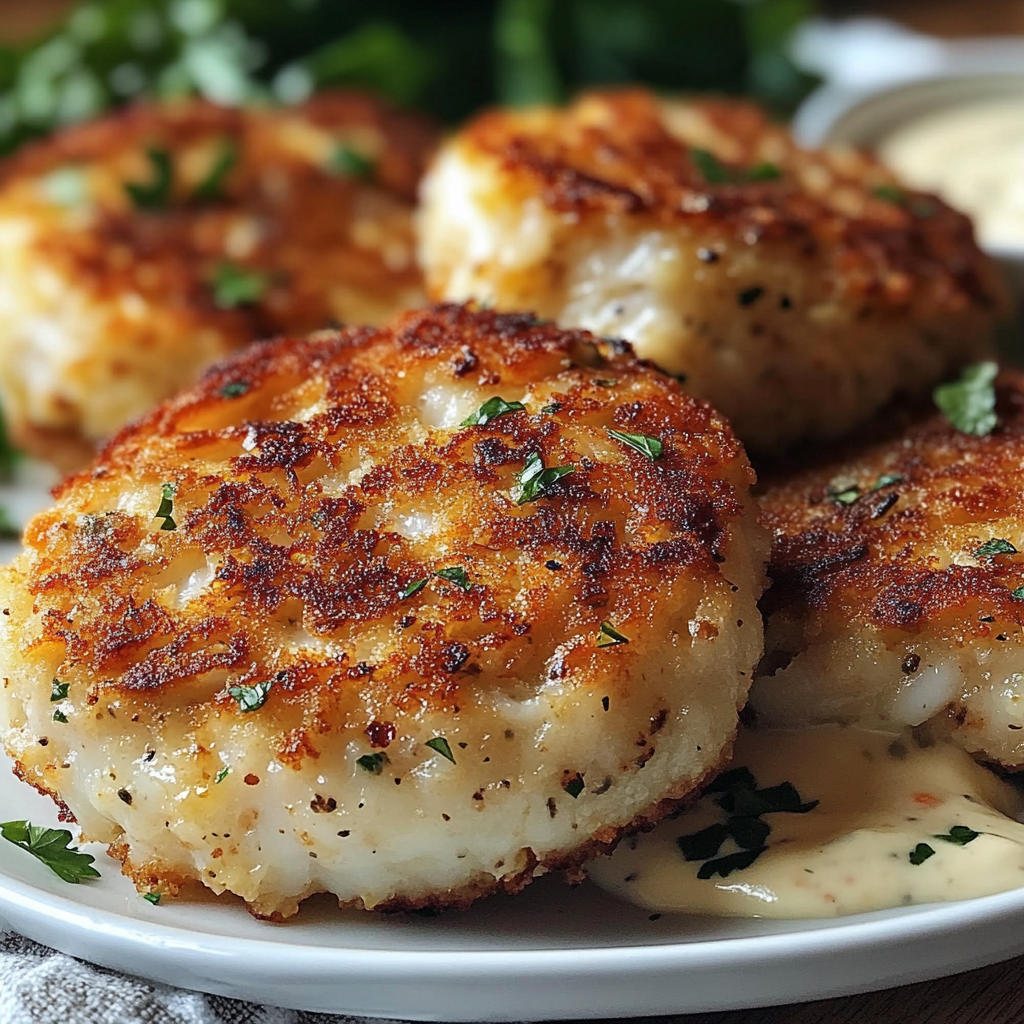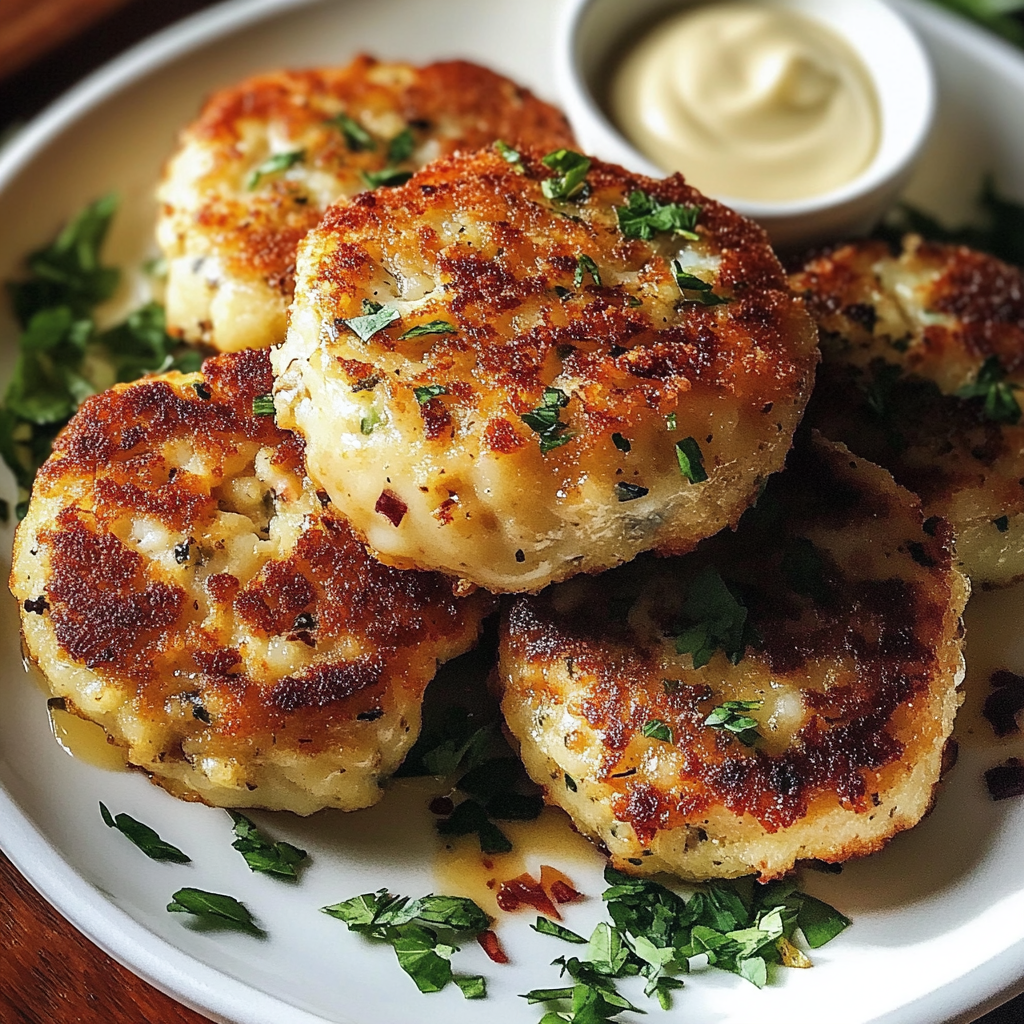 Pin it
Pin it
This rich and authentic Tangier Island Crab Cake recipe captures the essence of Chesapeake Bay cooking, featuring sweet lump crabmeat with minimal fillers for the most authentic flavor. Living just hours from the Chesapeake, I've perfected these cakes after years of trying different methods to let the crab truly shine.
I discovered this recipe during a weekend trip to Virginia's Eastern Shore, where a local waterman shared his family's generations-old method. The difference was immediately apparent from the first bite more crab, less filler, and absolutely no unnecessary ingredients.
Ingredients
- Large egg: Provides the essential binding that holds the delicate crab cakes together without making them dense
- Mayonnaise: Adds richness and moisture choose a quality full-fat variety for best results
- Ground mustard: Provides subtle heat without overpowering look for fresh ground mustard for best flavor
- Seafood seasoning: Traditional Old Bay is authentic but any quality seafood seasoning works well
- Prepared mustard: Adds tanginess and depth select Dijon for a more sophisticated flavor profile
- Fresh parsley: Brings brightness and color always choose fresh over dried for this recipe
- Salt and pepper: Basic seasonings that enhance without overwhelming the sweet crab flavor
- Lump crabmeat: The star ingredient use the highest quality you can afford and always check for shell fragments
- White bread crumbs: Traditional Tangier Island method uses simple white bread instead of panko or crackers
- Canola oil: Neutral high heat oil perfect for achieving that golden crust without adding competing flavors
Step-by-Step Instructions
- Prepare the binding:
- Thoroughly beat the egg in a large bowl until slightly frothy, then add mayonnaise, ground mustard, seafood seasoning, prepared mustard, parsley, salt and pepper. Whisk until completely smooth and uniform in texture. This creates the flavor base that will complement but not overwhelm the crab.
- Fold in the crabmeat:
- Add the precious lump crabmeat to the binding mixture and use a rubber spatula to fold gently with a lifting motion rather than stirring. Work slowly and deliberately to keep the large lumps intact, as those beautiful chunks are what make these crab cakes special. Continue until all the crab is evenly coated with the binding mixture.
- Add the breadcrumbs:
- Sprinkle the finely crumbled white bread over the crab mixture and again use that gentle folding motion to incorporate. The bread should be fresh and soft, then crumbled very finely. Mix just until combined do not overmix or the cakes will become dense and bready rather than light and crab-focused.
- Form the patties:
- With clean, slightly dampened hands, gently scoop about 1/3 cup of the mixture and shape into a patty approximately 1/2-inch thick. Press lightly to compact just enough that the cake holds together, but not so much that you crush the delicate crab lumps. Place formed patties on a parchment-lined baking sheet.
- Fry to golden perfection:
- Heat your canola oil in a heavy cast-iron skillet until shimmering but not smoking. Carefully place the crab cakes in the hot oil, being careful not to overcrowd the pan. Cook undisturbed for 2-3 minutes until the bottom develops a beautiful dark golden crust. Gently flip once and cook the second side to the same golden perfection.
 Pin it
Pin it
The lump crabmeat is truly what makes this recipe special. My most memorable experience with these crab cakes was serving them at my parents' 50th anniversary celebration. My father, who grew up on the Chesapeake, got teary-eyed saying they tasted exactly like the ones his grandmother made when he was a boy.
Best Crab Selection Tips
Choosing the right crabmeat makes all the difference in this simple recipe. Look for refrigerated lump crabmeat rather than canned whenever possible. The containers should be packed with large, visible chunks of white meat. Premium jumbo lump will give you the most impressive result, but regular lump crabmeat works beautifully too. Always check the meat carefully for shell fragments by spreading it on a plate before adding to your mixture. Fresh crabmeat should smell sweet and oceany, never fishy or ammonia-like.
 Pin it
Pin it
Make-Ahead Options
These crab cakes can be prepared in advance to make entertaining easier. Form the patties and place them on a parchment-lined baking sheet, cover with plastic wrap, and refrigerate for up to 4 hours before cooking. For longer storage, you can freeze the uncooked patties. Place them on a baking sheet until frozen solid, then transfer to a freezer container with parchment between layers. Cook from frozen, adding about 1-2 minutes to the cooking time per side. The texture is best when cooked fresh, but freezing works well in a pinch.
Serving Suggestions
Tangier Island crab cakes are traditionally served very simply, allowing the crab flavor to shine. A small wedge of lemon and perhaps a light remoulade sauce on the side is all you need. For a classic Chesapeake Bay meal, serve alongside corn on the cob and sliced tomatoes in summer, or with a simple green salad dressed with vinaigrette. These crab cakes also make excellent sandwiches on soft rolls with lettuce, tomato and a touch of mayonnaise. For an elegant appetizer, make miniature versions and serve with wooden picks.
The History Behind The Recipe
Tangier Island sits in the middle of Chesapeake Bay and has been home to watermen harvesting blue crabs for generations. The island's isolation has preserved cooking traditions that date back to the 1700s, when the island was first settled. This recipe reflects the islanders' philosophy of letting the sweet flavor of fresh crab take center stage. The distinctive dialect spoken on Tangier often described as similar to Elizabethan English is as unique as their cooking methods. The island's crabbing heritage faces challenges from climate change and rising sea levels, making these traditional recipes all the more precious as cultural artifacts.
Frequently Asked Questions
- → Can I use canned crabmeat instead of fresh lump crab?
Yes, canned crabmeat can be used, but fresh lump crabmeat is recommended for the best texture and flavor. Ensure you drain and pick through the crabmeat to remove any shell pieces.
- → How do I prevent the crab cakes from falling apart?
Mix the ingredients gently and avoid overhandling. Make sure the patties are compact and use the breadcrumbs to help bind the mixture. Chill the patties for 15-20 minutes before frying for extra stability.
- → What’s the best oil for frying these crab cakes?
Canola oil is a great choice due to its high smoke point and neutral flavor. You could also use vegetable oil or light olive oil for frying.
- → Can I bake these crab cakes instead of frying them?
Yes, you can bake them at 375°F (190°C) on a greased baking sheet for about 15-20 minutes, flipping halfway through, until golden and heated through.
- → What dipping sauces pair well with crab cakes?
Common choices include tartar sauce, lemon aioli, cocktail sauce, remoulade, or a light mayonnaise-based sauce with herbs and spices.
- → Can I prepare the crab cake mixture ahead of time?
Yes, you can prepare the mixture and shape the patties up to 24 hours in advance. Store them in the refrigerator, covered, until ready to cook.
